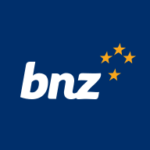November Market Update
12 Nov 2021
Hope and fear were finely balanced during the past quarter. During the first half hope won out, as much of the world (outside New Zealand) commenced, or at least made plans to start living with the virus and opening up. Fear took the upper hand in the latter part of the period, as supply shortages, expectations of sustained inflation, and higher interest rates bit. Meanwhile in August, fortress New Zealand’s walls were breached, sending people heading back to their houses and into vaccination centres, unsure of the path ahead.
Overall, international shares generated flat returns over the quarter, while domestic and international bonds fell. New Zealand shares had a good quarter, rising by about 5%. This was driven by strong earnings growth and some corporate activity.
Despite high caseloads, and the dominance of the more transmissible Delta variant, the roll out of vaccines has allowed many high-income countries, particularly in North America and Europe, a semblance of relief from COVID-19. Some countries started to ease restrictions, although rising hospitalisations and mortality rates, exacerbated by vaccine hesitancy, has hindered this process.
The strong investment performance that investors have enjoyed since the start of the year, driven by this reopening story and accommodative fiscal (high government spending) and monetary policy settings (low interest rates), continued during the first part of the quarter. However, in September investors’ confidence was knocked by a number of converging factors.
Massive stimulus measures, put in place following the collapse in demand, manufacturing, and trade during the first few months of the pandemic, supported a subsequent deluge of consumer spending, which strengthened as economies reopened. Rebooting an already fragile global supply chain to meet this pent-up demand has proved problematic. This has led to shortages of key manufacturing components, order logjams, escalating transportation and raw material costs, and ultimately, higher consumer prices.
The Federal Reserve (Fed) sets the US interest rate with the aim of controlling inflation in the world’s largest economy. In turn, the rate set by the Fed impacts interest rates in the rest of the world. Despite a significant increase in the general price level since the start of the year (with annual US inflation hitting 5.3% in August 2021), the Fed had taken a cautiously optimistic view on inflation, believing the rise to be a temporary phenomenon. In September, the Fed’s outlook shifted, as it indicated that it may taper, or reduce, the size of its asset purchasing programme starting in November 2021 (which has now happened), and wind it up by mid-2022. It also lifted its expectation for future interest rate increases, projecting a rate of 1.75% by the end of 2024, compared to 0.25% now.
Other global central banks, including the Bank of England, and the Reserve Bank of New Zealand (RBNZ), signalled that interest rates may increase faster than previously expected. A much anticipated 0.25% interest rate hike by the RBNZ in August was put on hold because of the COVID-19 outbreak, but subsequently occurred in October.
Share and bond markets are influenced by changes in the Fed’s interest rate outlook, particularly when it is not widely expected, as was the case in September. Following the Fed’s announcement, yields on bonds rose, and bond prices, which move in the opposite direction to yields, fell. Share markets outside New Zealand also felt a chill, as higher interest rates are likely to slow economic growth and reduce companies’ profitability. Many market commentators started to consider the possibility of a period of stagflation, a situation where weak economic growth and high inflation co-exist, eroding consumer purchasing power and reducing business investment.
Thrown into this volatile September mix was the near collapse of Chinese property giant, Evergrande Group, crushed under US$300 billion of debt. China’s second largest property developer by sales, Evergrande has been struggling to pay suppliers, and warned that it could default on its debt. Given how interlinked it is across China’s economic and financial system, there were significant fears about the impact of Evergrande’s collapse both inside and outside of China. Although the spike in worry that had gripped global markets over Evergrande had receded by the end of the quarter, many questions about its future remain.
Despite the turbulence that the world faces, since the start of October investors seem to have regained their poise, with US shares hitting record highs. While the Northern Hemisphere winter may put pressure on health systems, and lead to the rolling back of some freedoms, the impact of this on the economic recovery is likely to be mild. Strong consumer spending is expected to continue, supported by high savings rates, low unemployment, and pay rises. Share markets still have the ability to push higher, as corporate profitability remains sound. That said, higher interest rates may temper some of the spectacular asset price growth experienced over the past 18 months, as well as constraining returns from government bonds.
Any views expressed in this article are the personal views of the author and do not necessarily represent the views of BNZ, or its related entities.
This article is solely for information purposes and is not intended to be financial advice. If you need help, please contact BNZ or your financial adviser. Neither Bank of New Zealand nor any person involved in this article accepts any liability for any loss or damage whatsoever which may directly or indirectly result from any, information, representation or omission, whether negligent or otherwise, contained in this article.


